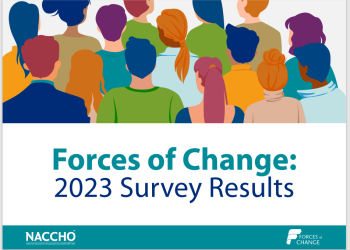By Tony Gomez, BS, RS, Manager, Violence and Injury Prevention, Public Health Seattle & King County; Clinical Faculty Instructor, University of Washington, School of Public Health
There is an urgent public health need to reduce suicide rates in the United States. There were 40,600 suicides in 2012, making suicide the tenth leading cause of death.1 Increases in suicide rates among Americans ages 35 to 64 across the country are cause for alarm; suicide in this age group rose 28.4% from 1999 to 2010.2 The greatest increases in suicide rates occurred in people 50 to 54 years old, which increased by 48.4%, and 55- to 59-year-olds, which increased by 49.1%.2 Among the most common methods of dying by suicide are firearms, the use of which increased by 14.4% from 1999 to 2010.1 In the United States, over half of suicide deaths are due to firearms; another 17% are due to poisoning by prescription medicines and other substances.3
Safe storage is an area of prevention in which diverse voices can coalesce in a positive way. Reducing access to highly lethal means can prevent firearm and poisoning suicide deaths and help turn the increasing suicide rates in a downward direction. There is strong evidence, both in the United States and abroad, of the effectiveness in reducing suicide by restricting access to lethal means.
Many suicides appear to have an impulsive or decisive component and occur during a short-term crisis. Impulsivity plays a significant role in suicide attempts: 24% of suicide attempts were decided within five minutes and 70% were decided within 60 minutes.4 Having easy access to highly lethal means, such as firearms, increases risk. The 2012 National Strategy for Suicide Prevention, a report from the U.S. Surgeon General and the National Action Alliance for Suicide Prevention, recommends the following actions to reduce access to lethal means, thereby reducing suicide risk:
- Encourage providers who interact with individuals at risk for suicide to routinely assess for access to lethal means;
- Partner with firearm dealers and gun owners to incorporate suicide awareness as a basic tenant of firearm safety and responsible firearm ownership; and
- Develop and implement new safety technologies to reduce access to lethal means.
In line with the 2012 National Strategy, public health professionals must encourage healthcare providers, firearm dealers, gun owners, and the general public to promote safe firearm storage and increase their involvement in suicide prevention. The practices of keeping a firearm locked and unloaded and storing ammunition locked and in a separate location were each associated with a protective effect.5 It is also possible that safely storing prescription drugs and other pharmaceuticals may have similar benefits for reducing suicide risk in a household, though this has not been tested or studied.
Suicide prevention efforts in King County, WA, and elsewhere in the country (e.g., New Hampshire) are championing safe storage of firearms. In King County, nearly 70% of firearm deaths are suicide. Fourteen percent or approximately 30,000 households with firearms reported storing at least one firearm loaded and unlocked—the highest risk situation. It is estimated that between 5,000 and 6,000 children live in homes with high-risk firearm storage. A King County child fatality review evaluation of 14 years of cases found that the risk of firearm suicide in youth under 18 years old was 9.2 times higher when firearms were stored in this unsafe manner.
A King County child fatality review evaluation of 14 years of cases found that the risk of firearm suicide in youth under 18 years old was 9.2 times higher when firearms were stored in this unsafe manner.
The Safe Storage Saves Lives Campaign is one option available to inform firearm owners and others about the benefits of safe storage. The King County website www.lokitup.org, which is heavily used by county residents and non-residents, includes links to firearm safe storage dealers, many of whom offer discounts on selected devices; research on firearms storage and lethal means restriction; frequently asked questions; information for providers; and descriptions of the various devices. Additionally, King County has adopted Harvard University’s Means Matter training for mental health and other healthcare providers. Since this was started in the fall 2014, over 40 providers have been trained in King County.
In line with NACCHO’s policy statement on suicide prevention, local health departments should look at their local suicide data and work with suicide prevention groups, law enforcement, firearm stores, and safe storage device sellers to promote safe storage. NACCHO encourages research at the federal, state, and local levels to test, evaluate, and establish best practices for the safe storage of firearms and other lethal means. NACCHO also encourages the developers of the Behavioral Risk Factor Surveillance Survey to once again ask about firearm storage practices. By having accurate data and engaged community leadership, safe storage of firearms is a strategy that holds strong promise to help reduce the burden of suicide nationwide and should be supported by all interests in the firearm discussion.
- Centers for Disease Control and Prevention. (n.d.). 10 Leading Causes of Death by Age Group, United States – 2012. National Vital Statistics System: National Center for Health Statistics. Retrieved Nov. 24, 2014, from http://www.cdc.gov/injury/wisqars/pdf/leading_causes_of_death_by_age_group_2012-a.pdf
- Centers for Disease Control and Prevention. (2013). Suicide among adults aged 35–64 years – United States, 1999–2010. Morbidity and Mortality Weekly Report; 62(17):321-325. Retrieved Nov. 24, 2014 from http://www.cdc.gov/mmwr/preview/mmwrhtml/mm6217a1.htm
- Centers for Disease Control and Prevention (2014). Suicide and Self-Inflicted Injury webpage. Retrieved Nov. 25 from http://www.cdc.gov/nchs/fastats/suicide.htm
- Miller, M., & Hemenway, D. (2008). Guns and suicide in the United States. The New England Journal of Medicine, 359:989-999. Retrieved Nov. 25, 2014 from http://www.nejm.org/doi/full/10.1056/NEJMp0805923
- Grossman, D. C., Mueller, B. A., Riedy, C., Dowd, M. D., Villaveces, A., Prodzinski, J., et al. (2005). Gun storage practices and risk of youth suicide and unintentional firearm injuries. Journal of American Medical Association, 293(6):707-714. Retrieved Nov. 25, 2014 from http://depts.washington.edu/hiprc/pdf/LockboxJAMA.pdf
Special thanks to Jerry Reed, Jack Herrmann, Eric Caine, and Sheri Lawal.






